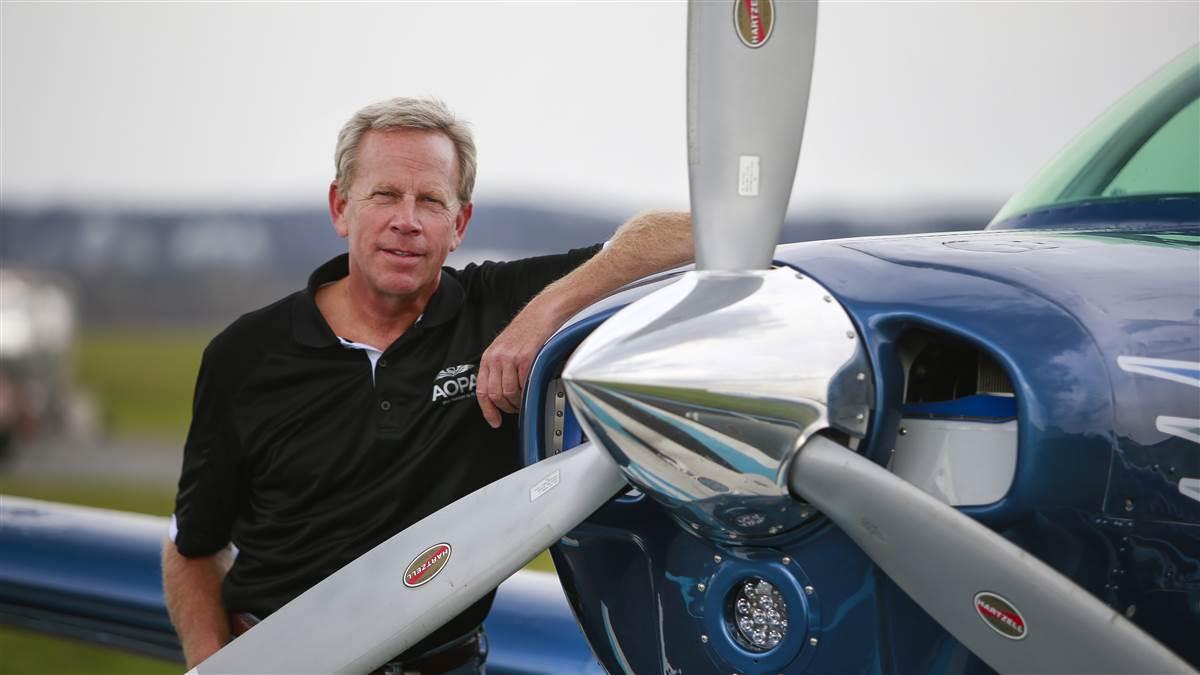September 16-17, Battle Creek, Michigan (BTL)
Michigan aviation mecca

A surprise behind every hangar door
There’s more than meets the eye at Battle Creek, Michigan’s W.K. Kellogg Airport (BTL). A remarkable array of aircraft is hidden within each of the hangars situated along the area that will host AOPA’s third fly-in of 2016. From new versions of a venerable design to over-the-top business jets, the aircraft in the hangars at Battle Creek will amaze attendees.
“We have a unique and diverse tenant base that serves the general aviation community,” said Larry Bowron, director of transportation for the city of Battle Creek and manager of the W.K. Kellogg Airport. “Visitors are going to see things here that you can’t see anywhere else.”
Fly-in visitors will first notice the massive footprint of Duncan Aviation. It is a 352,360-square-foot maintenance, repair, and overhaul (MRO) facility, which is one of the largest in the world. As the world’s largest privately owned business jet support company, Duncan Aviation provides acquisition, sales, and nose-to-tail support service for business aviation. Here you’ll see jet aircraft from Bombardier, Dassault, Textron, Gulfstream, and Embraer in various stages of refurbishment. Tours for AOPA attendees will be available throughout the day on Friday, September 16.
At Western Michigan University’s aviation division on the field at Battle Creek, visitors will be impressed by the gleaming line of Cirrus aircraft used for primary flight training. Enthusiastic CFIs and their students take to Battle Creek’s skies for training in these all-glass-cockpit super trainers.
But it’s the step back in time at the Waco Aircraft Corp. facility that might push this visit over the top. This one-of-a-kind aircraft manufacturer makes the world’s finest and most “exhilarating” aircraft, according to its affable owner Peter Bowers, who will host tours of this family-owned American company. “We start with steel tubing, build a frame, and turn it into an airplane,” Bowers said of his company. AOPA fly-in attendees will see all the major production steps to building both the Waco YMF and the Great Lakes biplanes. The facility will host seminars and offer tours throughout the day.
“The aviation culture of Battle Creek is an exciting environment for any aviation enthusiast,” said Chris Eads, AOPA director of outreach and events. “Centrally located in the Midwest, Battle Creek is also within an easy reach of some of the most beautiful parts of our country. From here attendees can fly out to the shores of Lake Michigan, visit our northern neighbors in Canada, and see the Upper Peninsula.”
Battle Creek is “a great place to host an AOPA fly-in,” said Bowron. “There’s lots to do; a large, friendly group of GA pilots; and we have beautiful weather—Battle Creek is a gem of a GA airport.”
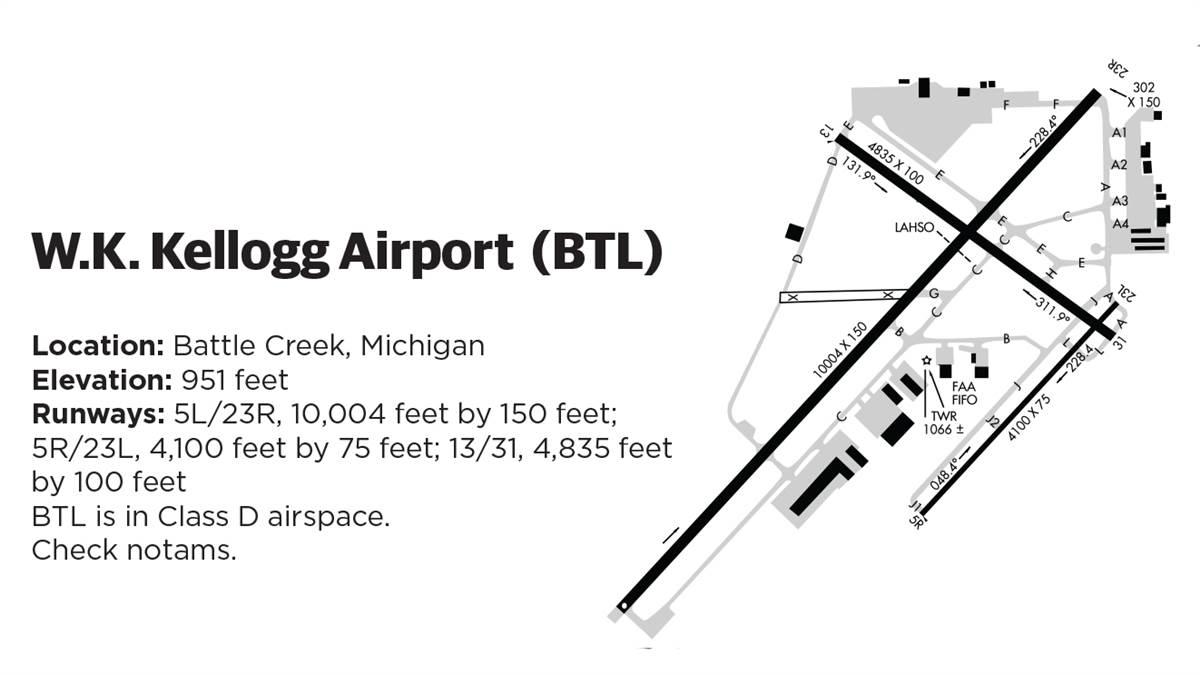
Trip of a lifetime
Adrian Eichhorn and his Beechcraft Bonanza P35 completed the trip of a lifetime June 7 when he landed in Manassas, Virginia, after a 25,000-mile flight around the world. His aircraft was modified with 100-gallon tip tanks on the wings, helping to propel him to 21 countries.
Eichhorn launched his round-the-world flight on April 10, flying in five continents and over three oceans for a personal achievement that, he says, had nothing to do with record books. “This isn’t a record, it isn’t a best this or that—it’s pushing the limits of anything I’ve ever done,” said the 60-year-old Jet Blue Airways pilot. He remembers that aviator/inventor Burt Rutan once signed his autograph book by drawing a picture of Voyager and writing, “Adventure is the essence of life.”
“It stuck with me. I was at a point in my life, both time and financially, that I could do it,” he said. The trip pushed the aircraft’s performance and Eichhorn’s endurance. He came home physically tired but emotionally energized by the experience. He shares his insights and stories at seminars at all of the upcoming AOPA Fly-Ins.
Aircraft maintenance has become Eichhorn’s avocation, and he recently was named the 2016 Maintenance Technician of the Year by the FAA/industry General Aviation Awards program. For the past four and a half years, he dismantled and modified his 54-year-old Bonanza for the trip. He enlarged the baggage door, replaced the skin—“Sheet metal work is a form of therapy,” he said—rebuilt the panel, rebuilt the wings, and added those tip tanks. He had 270 gallons of usable fuel, which served him well on the long-haul flights this trip demanded. The longest leg was from Hilo, Hawaii, to Long Beach, California. “Flying GA keeps me sharp. I never want to be an airline pilot who doesn’t know how to fly,” he said.
Wacko for Wacos
Watch the biplanes being built
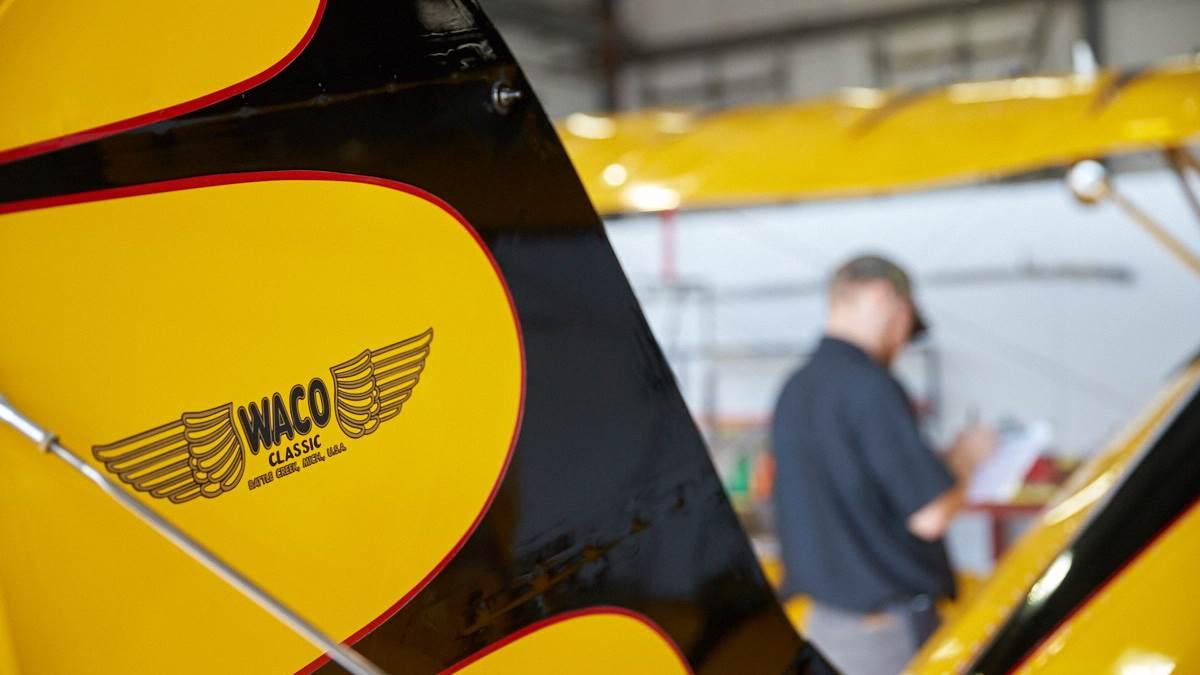
Once the most popular small aircraft in the United States, nothing evokes the nostalgia of the Golden Age of aviation like a Waco biplane. The Weaver Aircraft Co.—“Waco”—built the open-cockpit biplane from 1920 until 1946. In the early 1980s, two aviators from Lansing, Michigan, wanted to bring the Waco back to life. They negotiated with the FAA to get the type certificate and began remanufacturing Wacos, with the first new aircraft released in 1986. A couple of ownership negotiations later, Peter Bowers and his father Jon bought the Waco Aircraft Corp. in Battle Creek in 2008. “I was like a kid in a candy store,” Peter Bowers said of his first exposure to the Waco facility. “It took us two years to buy it. We are proud stewards of a great company.”
The Waco Aircraft Corp. may be the “smallest aircraft manufacturing facility in the world,” as its owner attests, but it makes the “safest, most reliable, high-quality biplanes available.” In the facility on the W.K. Kellogg airport, Waco YMF-5 aircraft and Great Lakes aerobatic biplanes are built from start to finish. The steel tubing is welded here to create the aircraft frame; the fabric is stretched, sewn, and treated for the aircraft wings and fuselage; and the avionics are installed here. But that’s just a simplification of the production steps. Visitors to the factory will see the work of 25 highly skilled craftsmen—and some contributions from Bowers himself, who admits to “twisting a wrench, doing an oil change, and delivering an airplane” on occasion.
The facility takes pride in the fact that it uses a 50-year-old design and manufactures it as a new FAA-certificated aircraft. The Waco produced today has been modernized with 300-plus engineering changes and redesigned after more than 1,400 drawings and the building of new tooling for production. More than 5,000 hours of fine craftsmanship goes into each aircraft. The company produces between eight and 12 aircraft each year, which are delivered all over the world.
“You’re going to see a lot of cool airplanes,” Bowers said. “You’ll see airplanes in different stages of production. This type of aircraft pushes all the buttons. It’s a thrill.”
An experience like no other
Duncan Aviation takes care of the bizjet world
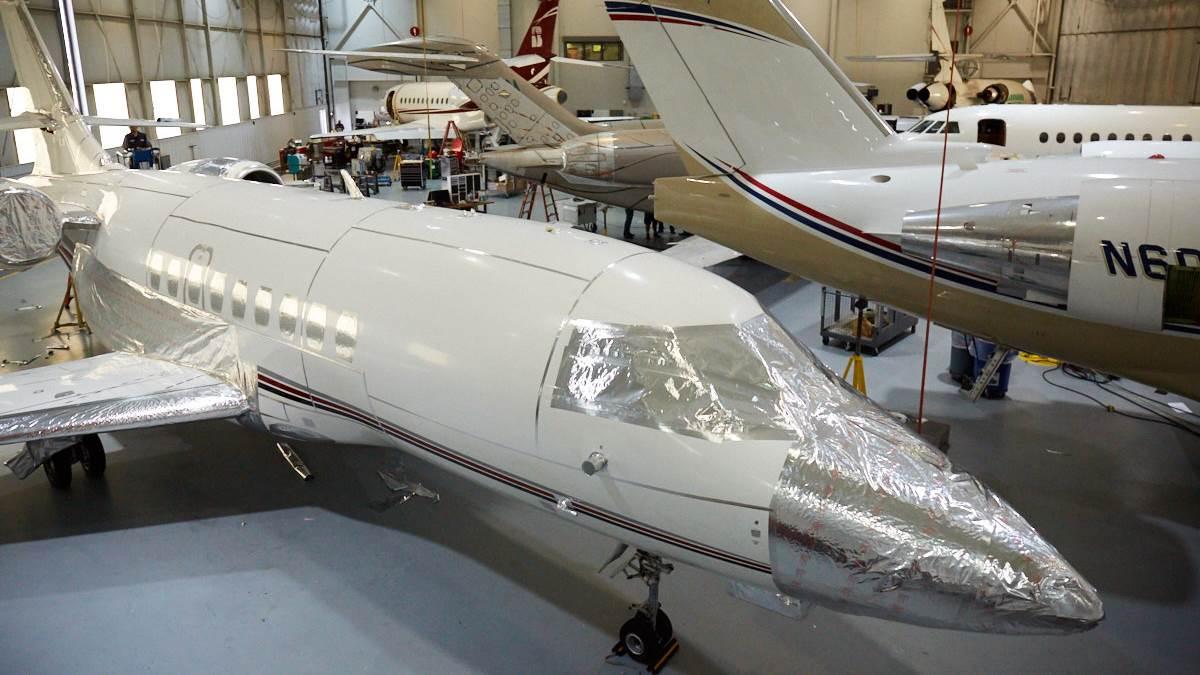
Prepare to be amazed. Duncan Aviation is a spa for business jets. Here these beauties will have their paint restored, their interiors spruced up, and their avionics manicured. It’s Botox for bizjets.
Little could Iowa farmer Donald Duncan have imagined that his purchase of a small new Beechcraft distributorship in 1956 would amass his family fortune, nor turn into a highly ethical, professional organization of the most talented craftsmen and technicians in the aviation industry. Today, as the largest privately owned business jet support organization in the world, Duncan Aviation not only gives its customers “an experience like no other,” but also is a highly philanthropic, gracious organization with a culture that celebrates art and innovation.
Throughout its facilities in Lincoln, Nebraska; Provo, Utah; and Battle Creek are extensive collections of well-known and emerging artists. Even former chairman Robert Duncan’s Cessna Citation has a distinctive and artistic paint scheme. Robert is Donald’s son; he and his wife, Karen, are responsible for the art collections. Their son Todd is the current chairman.
This is the sixtieth anniversary of Duncan Aviation, which provides nose-to-tail support service for Bombardiers, Gulfstreams, Embraers, and more on a 24-hour/seven-days-a-week/365-days-a year schedule. Duncan’s business philosophy is to do the right thing with a professional attitude. Each area of the Battle Creek facility is filled with amazing aviation experiences—high-end flooring and leathers; the latest avionics; and some of the busiest painters in the aircraft industry.
Cirrus are us: Unique aviation college

When former United Airlines Chief Pilot Dave Powell embarked on his second career as dean of the College of Aviation at Western Michigan University, he knew students attending WMU for an aviation degree came there for one thing: a job. So he convinced the faculty and administration that flight students needed to train in the same thing that they’d find in the real world—all-glass cockpits and aircraft that looked and felt like the professional aircraft they would eventually fly. “We need to train today’s pilots in what’s going on today, not what went on in the past,” Powell said. “We need the industry involved in the training of the future.” So he called on then-CEO of Cirrus Aircraft Alan Klapmeier, and today WMU leases 26 Cirrus SR20s for instruction. “This was a leap of faith for the faculty,” said Powell of his changes that were implemented 10 years ago. WMU is now the third largest aviation training school in the country. “This is a professional program for professional pilots,” Powell says. “I don’t think there’s a better program in the world.”
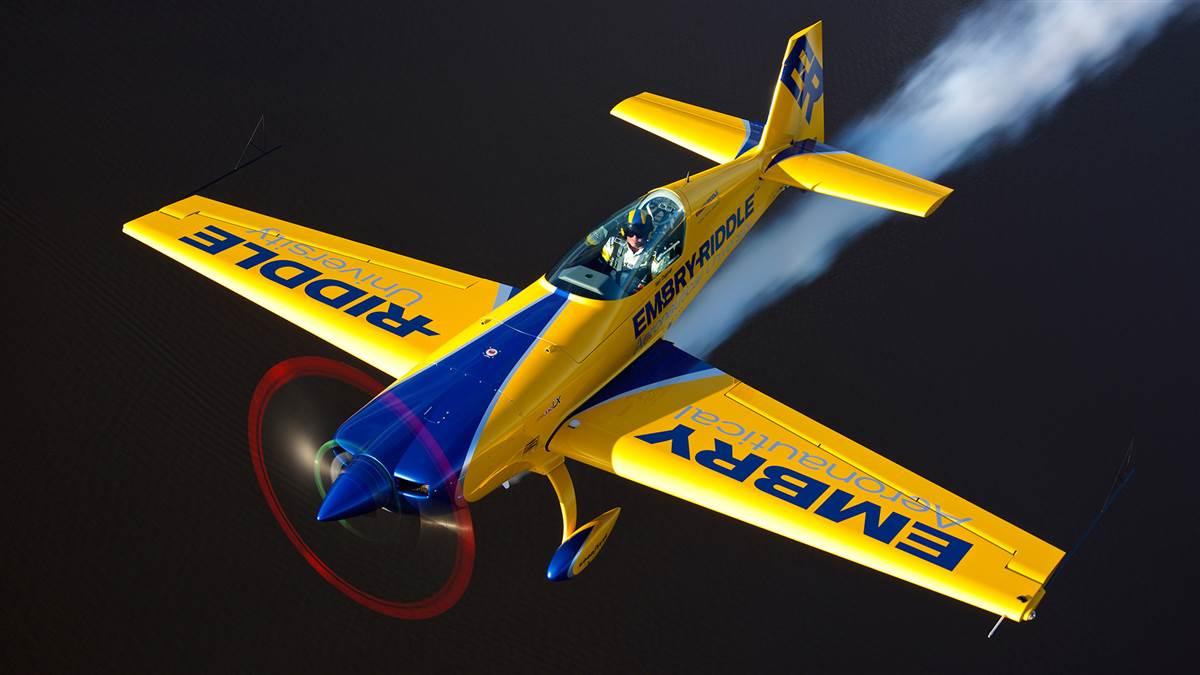
Embry-Riddle Aeronautical University will present aerobatic showstopper Matt Chapman flying his Embry-Riddle Extra 330LX in a heart-stopping aerobatic demonstration Saturday between noon and 1 p.m.
10 reasons to come to Battle Creek
- 1 Breathe in deeply and smell the corn flakes. This is the “Cereal Capital of the World.”
- 2 View the vintage aircraft and replicas—and so much more—at the Kalamazoo Air Zoo, worth the 15-minute drive from the Battle Creek airport.
- 3 Taste super-fresh sandwiches and homemade bread and quiche at Continental Pastries and Deli on Columbia Avenue. There’s ice cream, too!
- 4 Marvel at the lineup of 26 Cirrus aircraft on the ramp at the Western Michigan University College of Aviation.
- 5 Try traditional German food—and a craft beer—at the Territorial Brewing Company across from W.K. Kellogg Airport.
- 6 Savor real Mexican food in a great authentic atmosphere at Nina’s Taqueria.
- 7 Gaze in awe at the massive footprint of business jet support facility Duncan Aviation.
- 8 Enjoy spectacular artwork in the collection of the Duncan family on display throughout the facility.
- 9 Fly out to scenic parts of western Michigan, such as South Haven, Benton Harbor, or north to Traverse City and Mackinac Island.
- 10 Be at show center in the Waco Aircraft Corp., where AOPA skill and safety seminars will take place in the facility’s final assembly bay.
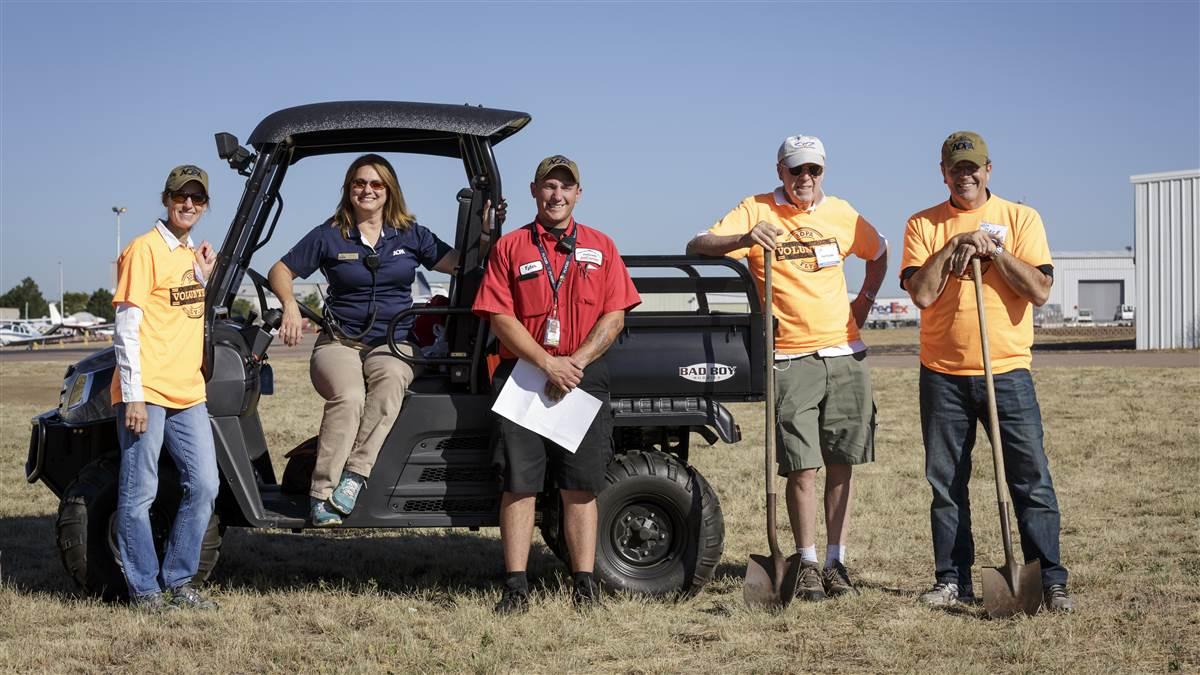 One of the best ways to enjoy an AOPA fly-in is to volunteer. From pancake prep to aircraft parking, volunteering will give you a unique perspective on the day’s activities. We need your help in setting up exhibits, marshalling aircraft, breakfast and lunch prep, set-up, clean-up, and more. Not only will you enjoy the camaraderie of fellow aviation enthusiasts as you help AOPA present a fly-in in your local area, but you’ll get a free lunch, T-shirt, and AOPA cap. Sign up
One of the best ways to enjoy an AOPA fly-in is to volunteer. From pancake prep to aircraft parking, volunteering will give you a unique perspective on the day’s activities. We need your help in setting up exhibits, marshalling aircraft, breakfast and lunch prep, set-up, clean-up, and more. Not only will you enjoy the camaraderie of fellow aviation enthusiasts as you help AOPA present a fly-in in your local area, but you’ll get a free lunch, T-shirt, and AOPA cap. Sign up 